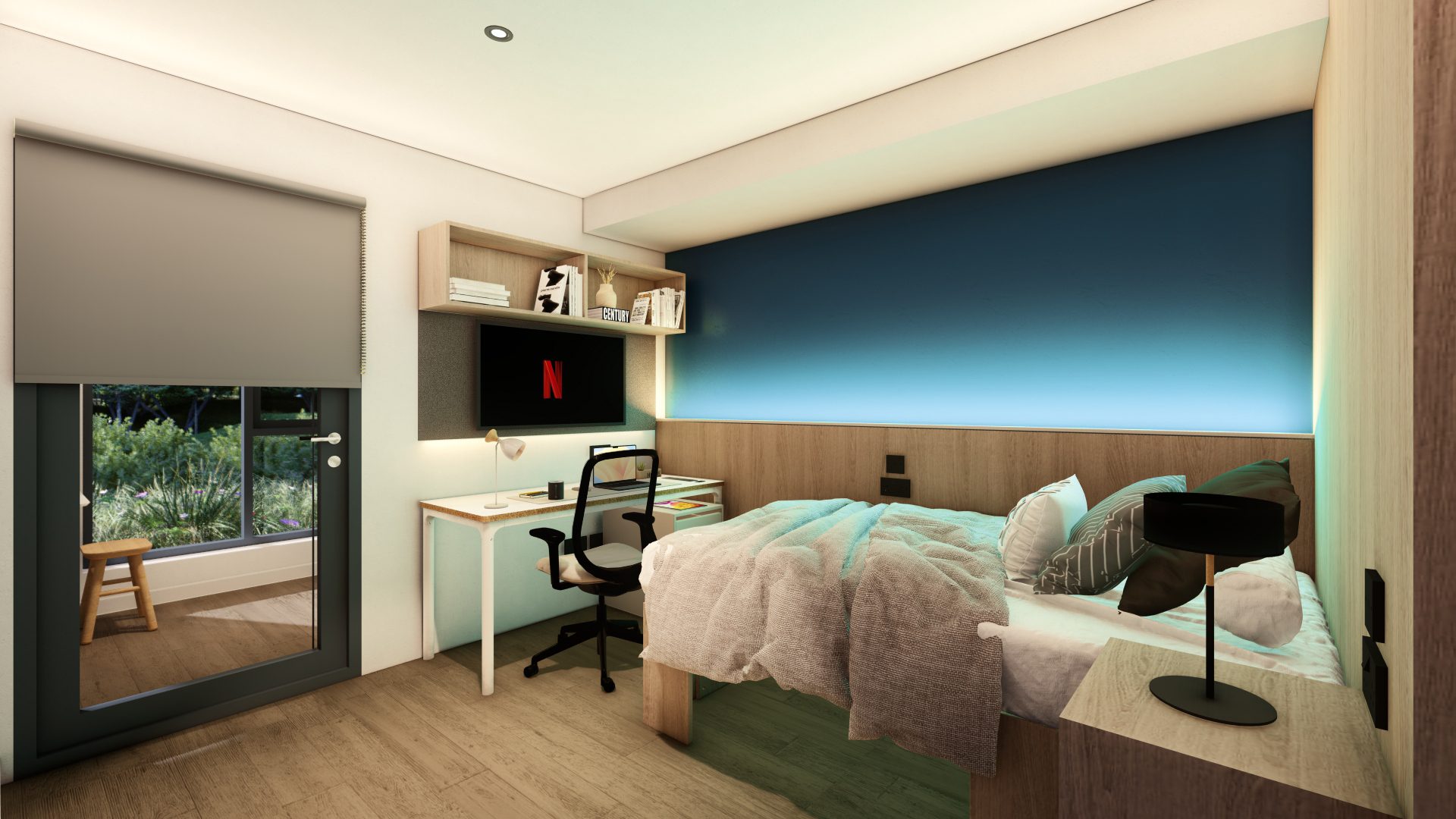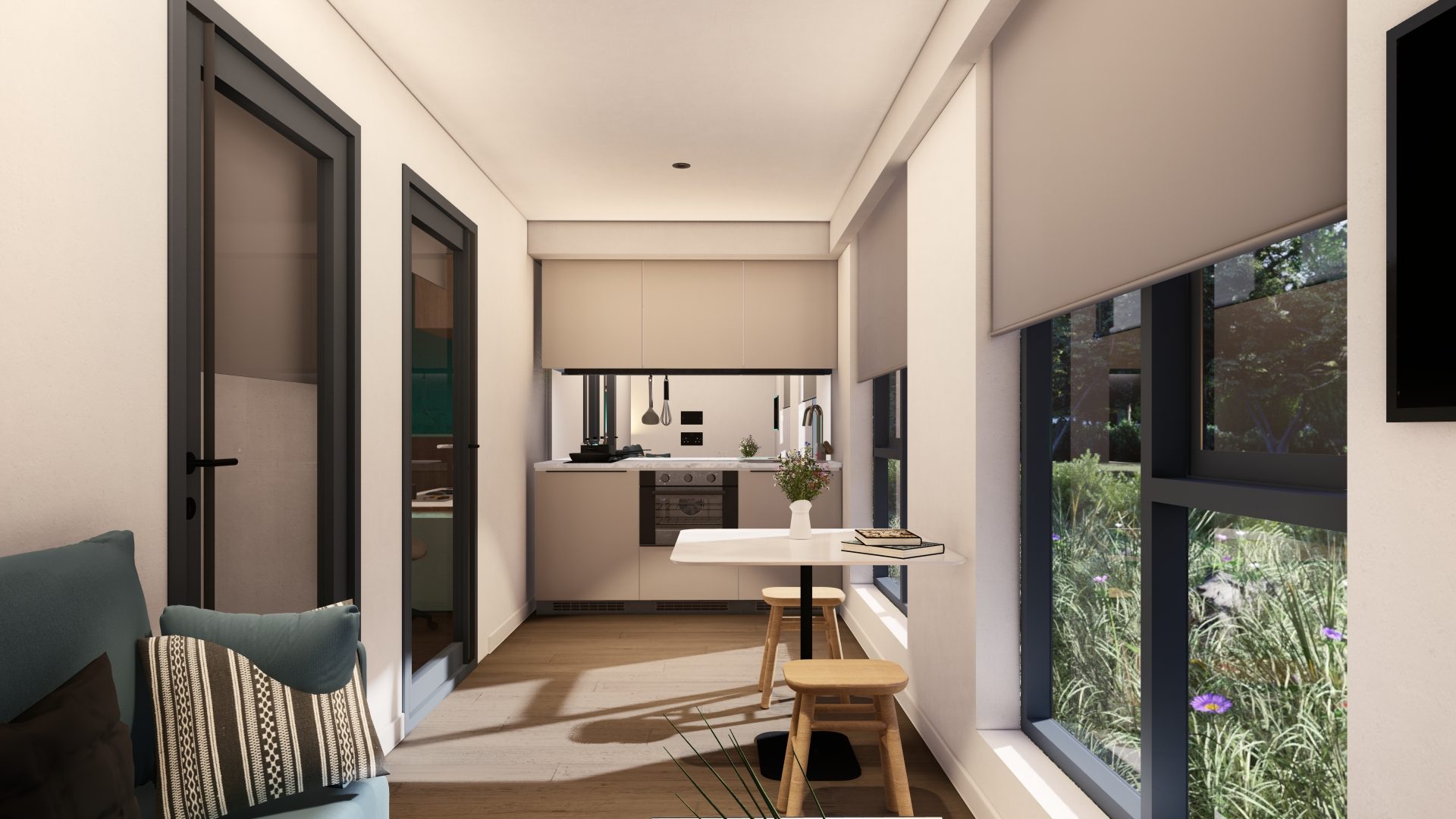How Modular Construction Can Deliver a More Dignified, Sustainable and Scalable Response to the Housing Crisis
By John Bell, Group Managing Director, Stelling Properties
As the number of households in temporary accommodation in England hits unprecedented levels, the conversation around emergency housing has reached a tipping point.
The statistics are sobering. Over 127,000 households, including 165,000 children, are living in temporary accommodation and the figures continue to rise year-on-year. More than 43,000 of those families are in nightly-paid accommodation – hostels, B&Bs and hotels – representing a 47 per cent increase in just 12 months according to the homeless charity Shelter.
For local authorities, this crisis is not just about numbers – it is about people, place, dignity, and cost. Families are being uprooted from their communities, moved out of boroughs, and placed into short-term accommodation that is often cramped, unsuitable and lacking even the most basic elements of what most of us would consider ‘home’.
In the meantime, the cost to housing providers is spiralling. Temporary accommodation already accounts for over £1.7 billion of annual spend – a figure projected to rise by 71 per cent to £3.9 billion by 2029 if current trends continue. In many areas, the available supply of emergency housing, particularly which is fit for families, simply does not exist.
So, the question is not just how to house people quickly, but how to deliver better emergency housing. How can the public sector provide a more sustainable, dignified, and financially viable response to an emergency that continues to increase?
This is where modular construction has a critical role to play.
A System Under Strain
Emergency housing is meant to be just that – temporary. However, the reality for many families is that they remain in poor-quality accommodation for months, sometimes years.
Hotels, B&Bs and hostels – originally conceived for transient, individual users – are now being relied upon to house entire families. Not only is this deeply unsuitable, but it is also incompatible with long-term wellbeing. Children’s education is disrupted, mental health suffers, and communities fragment.
Local authorities are doing what they can in impossible circumstances. But the fundamental issue is that the housing system is not responding fast enough. New social housing is not coming forward at the pace required with issues around planning, regulatory changes and depleted capital budgets. The private rental sector is increasingly unaffordable or unwilling to accommodate those in need.
It is a perfect storm of high demand, limited supply and constrained budgets – but the current short-term approach of using nightly-paid accommodation is no longer tenable.
Why Modular Makes Sense
Modular construction offers a way to shift the paradigm – moving from reactive, piecemeal fixes to proactive, scalable solutions.
Unlike traditional construction, modular homes are manufactured offsite in a controlled environment and can be delivered to site fully fitted or shell only, ready for fitting out. This approach brings multiple benefits that are very relevant to emergency housing:
- Speed of Deployment
Modular housing – particularly from stock – can be ordered and installed in weeks, not months. This rapid delivery is crucial when there are waiting lists of homeless households and an urgent need to prevent more families entering unsuitable accommodation. Ordering from stock also reduces risk for local authorities and housing associations in an uncertain economic climate.
2. Quality and Consistency
In a factory-controlled environment, the quality of modular construction is significantly higher and more consistent than traditional site-based building methods. Modules are precision-engineered to meet all Building Regulations and should be independently assessed and accredited by industry schemes such as BOPAS for residential use.
The modules are designed and manufactured for long-term occupancy, not just short-term use. This addresses the core issue of suitability – giving people dignity with a space they can genuinely call home, however temporarily.
- Flexibility
Modular construction is highly adaptable. Units can be single-person bedrooms, studios, family apartments, or accessible dwellings for people with mobility needs. They can be relocated, stacked, and reconfigured to suit changing local needs or planning requirements. This is particularly useful for local authorities with underutilised land or stalled sites.
- Lower Operational Costs
Well-designed modular apartments are more energy-efficient, with better air tightness and thermal performance. This means reduced utility bills and lower operating costs – important when managing multi-occupancy housing for those on limited incomes.
- Reduced Disruption
Because the majority of construction takes place offsite, local disruption is minimal. Sites can be operational within days, not months, avoiding the long tail of construction traffic, noise and delays that can deter new build projects in sensitive residential areas or on constrained brownfield sites.
Reframing Emergency Housing as Public Infrastructure
There is a broader point here about how we frame emergency housing. Too often it is seen as a short-term burden or crisis management tool. But if we reframe it as essential public infrastructure – such as schools or hospitals – then investing in better quality emergency housing becomes not just a cost, but an asset.
Emergency accommodation doesn’t have to mean substandard. Well-designed modular accommodation can be reused across multiple sites or transitioned into permanent affordable housing. With some foresight, today’s emergency housing solution can become tomorrow’s supported housing, key worker accommodation or affordable rental scheme.
Some local authorities are already pioneering this approach. Using modular stock on short-term leasehold sites or while land is available allows for quick wins without a protracted planning process. When a site is ready for development, the modules can be lifted and reused on another local authority site – a truly circular, resource-efficient approach to housing delivery.
From Crisis Response to Systemic Change
Modular construction is not a silver bullet. We still need strategic investment in permanent social housing, reform of the private rental sector, improvements to planning and upstream solutions to prevent homelessness in the first place. But modular construction offers a solution to break the deadlock by moving from an emergency footing to a more resilient, long-term strategy at less cost.
For housing professionals, particularly those in local authorities and housing associations, the opportunity is clear. Modular accommodation can be:
- A bridge to a more stable housing pathway
- A much more cost-efficient alternative to nightly-paid accommodation
- A tangible demonstration of innovation and responsiveness to a crisis
- A more dignified solution for families who deserve better than a room in a hotel located miles from their children’s school.
Conclusion: Time to Act Boldly
The housing emergency demands action – not just in scale, but in approach. We can no longer afford to meet 21st-century housing challenges with 20th-century delivery models.
Modular construction gives us the tools to act faster, smarter and more compassionately. It offers a genuine alternative to the revolving door of unsuitable emergency placements and spiralling costs. But for this potential to be realised, it will take courage and collaboration – from local authorities, from housing associations, from central government, and from construction industry.
If we are to provide a housing system that treats everyone with dignity and respect – even in times of crisis – then we must be willing to embrace new thinking, and new building.
John Bell is Group Managing Director of Stelling Properties, a leading and award-winning residential modular construction and development company based in Hampshire. Stelling works with housing associations, local authorities and private sector partners to deliver multi-occupancy housing across the UK and in Ireland.


